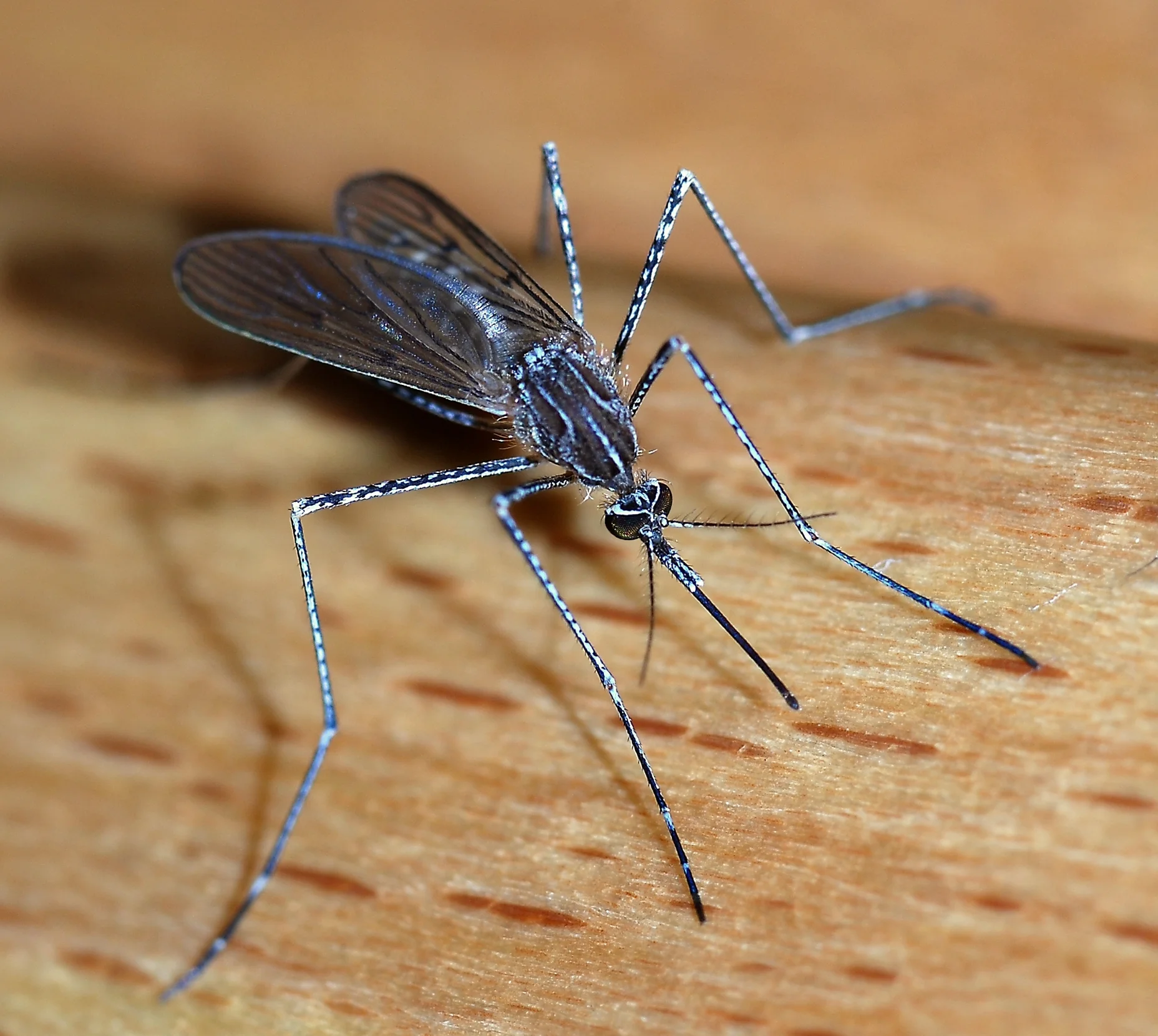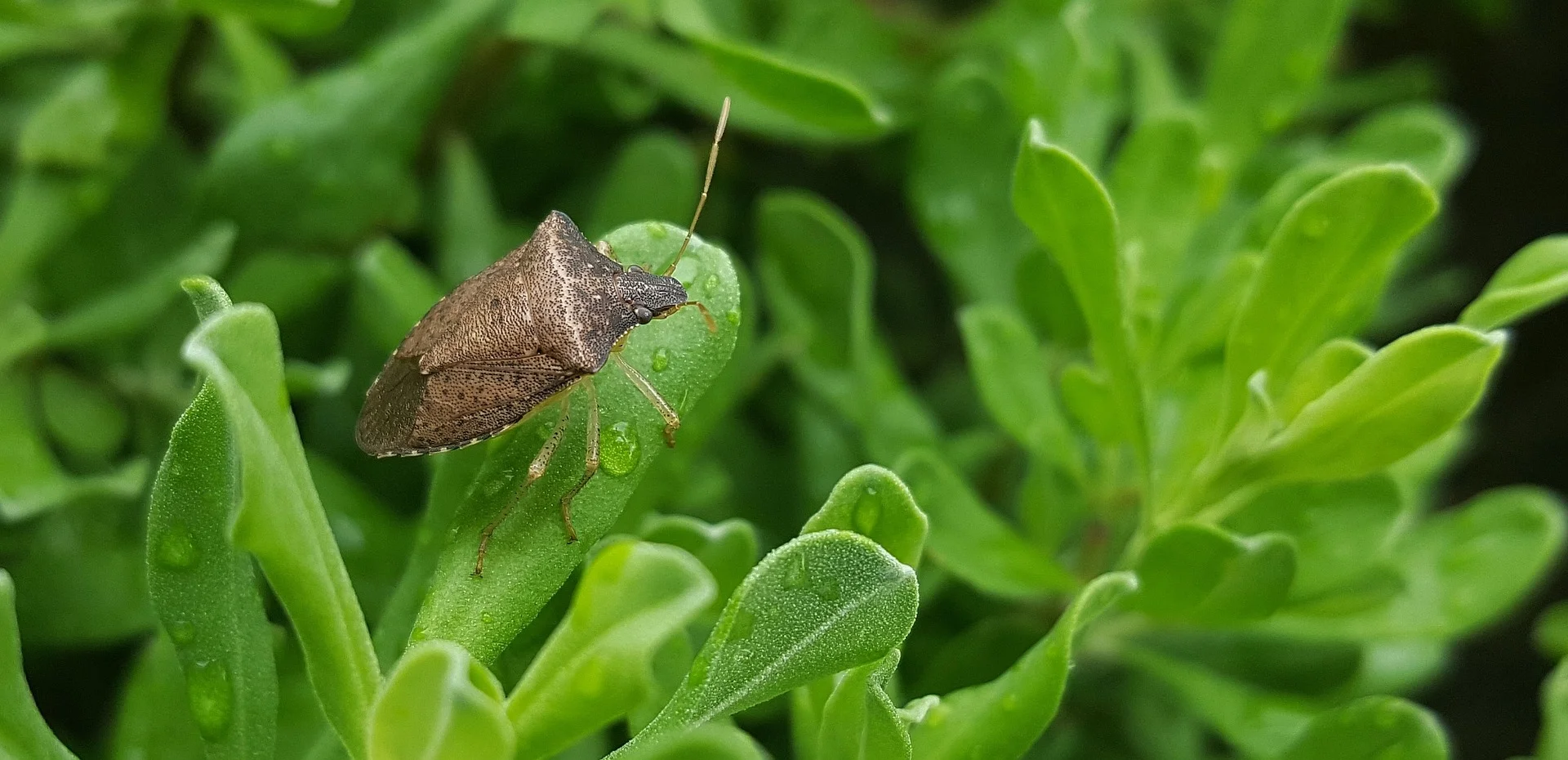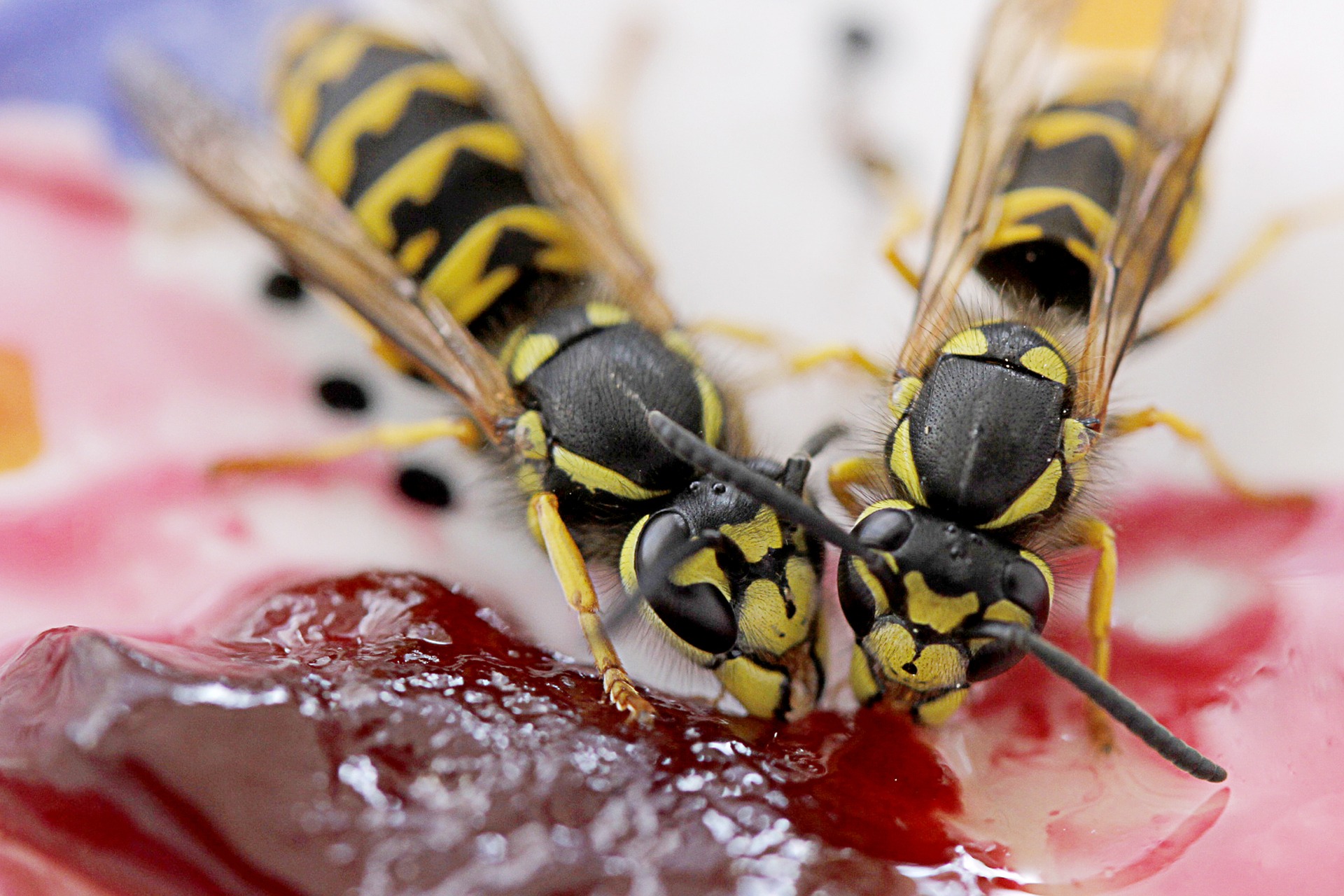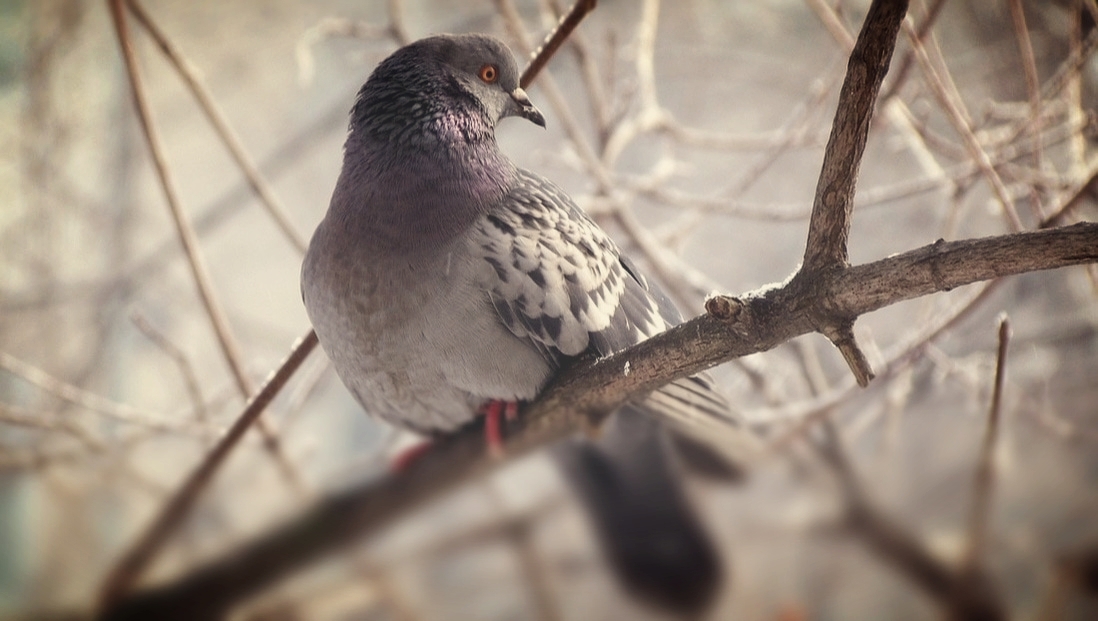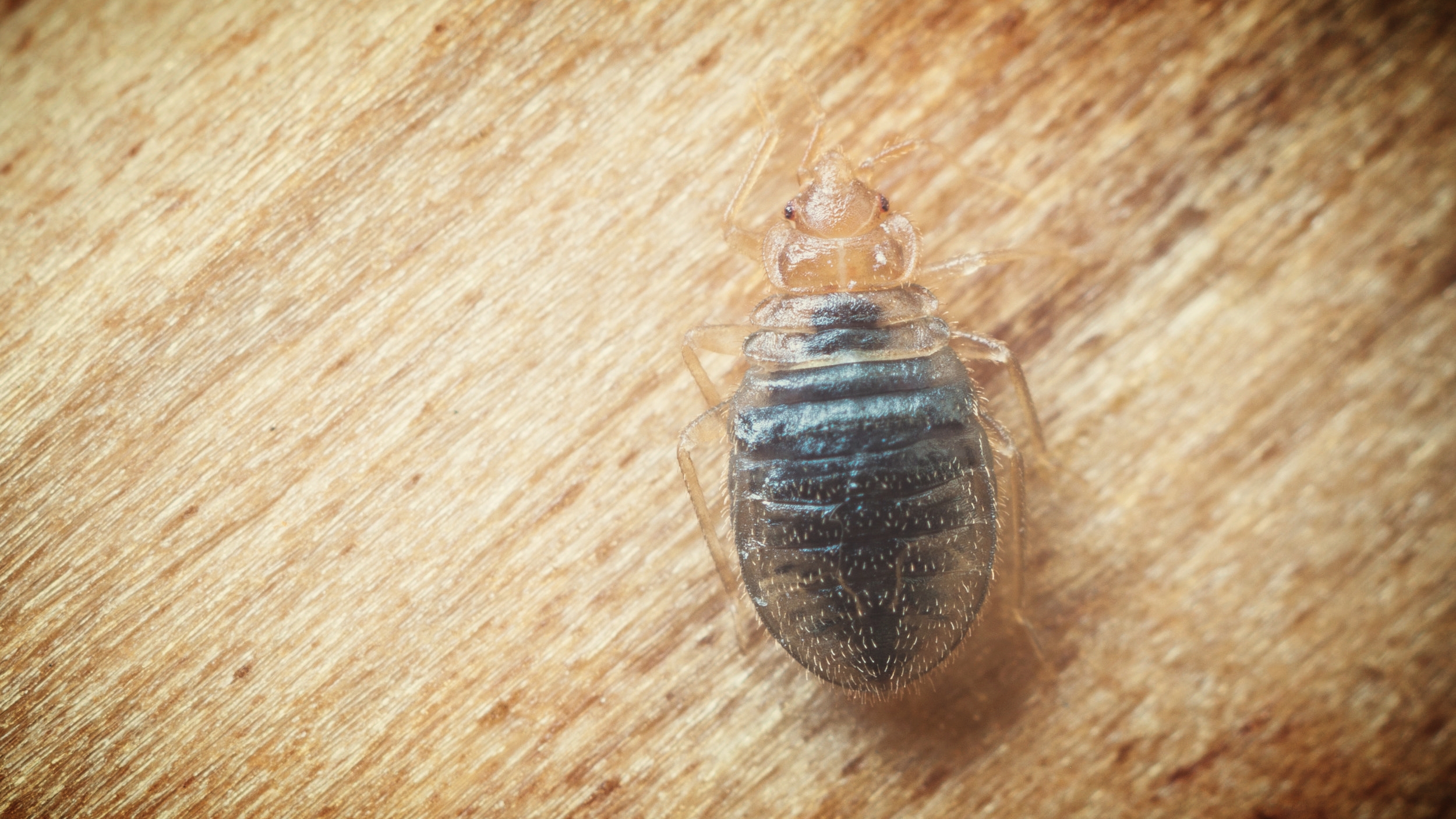While stink bugs are harmless to humans, their large numbers and hibernation patterns pose a threat to tropical plants inside the home, vegetable gardens, crops. And, it's no secret that stink bugs have become a constant annoyance for homeowners, gardeners, and farmers alike. Below you'll learn a few proven methods to help control and prevent stink bugs in and around the house.
What stink bugs eat?
The mouthparts of stink bugs are made for sucking and piercing, which they use to feed on fruits, vegetables, and certain crops. Stink bugs can cause significant damage to plants when they feed. Stink bugs prefer many species of plants and trees to feed on. Trees like birch, serviceberry, hackberry, catalpa, redbud and dogwood are known favorites for stink bugs to eat. Nut and fruit trees preferred by stink buds are pecan, apple, plum and pear. Stink bugs love your bell peppers, cucumber, tomato, grape leaves, and sunflowers. Stink bugs will damage a plants leaf surface, its fruits, injure its seeds, and transfer pathogens making them a natural enemy for farmers, homeowners, and gardeners to combat.
What attracts stink bugs?
Stink bugs are attracted to food and certain environments! The types of plants near a home will always be an attraction and a reason for why you might have them worse than your neighbor. And, as for environmental conditions, stink bugs breed in warmer weather since they are cold-blooded needing the external heat to keep them alive. It's apparent to professionals that stink bugs are attracted to light colored homes where they easily bask in full sun. This is noticable on the exterior of buildings in the spring as they go back into nature for feeding and breeding, and during early fall where hundreds to thousands may be gathered gaining access into the home for winter. Inside homes, a stink bug's favorite place to hide or overwinter are in windowsills and door frames.
Do stink bugs bite?
Stink bugs do not go after people or animals for any reason. In fact, if they bump into you during flight it is most likely a complete accident. They keep to themselves. But, it is known that stink bugs may bite humans if they feel threatened. If a stink bug bites, the person may feel some discomfort in or near the area of the bite. According to local physician's a stink bugs' bite is usually considered non-poisonous to adults but, it may be considered poisonous for newborns and toddlers. As with any insect bite, seek the advice of a licensed medical practitioner. With that said never fear a stink bug. Swatting at stink bugs as they fly or smashing them with your hand will only increase your odds of being bitten. If you let them be they will leave you be! If you find a stink bug crawling on you gently flick it off as this will avoid a bite and the release of its smell.
Stink bugs in the house?
Stink bugs inside the home are over-wintering adults that came in to hibernate during winter months. Stink bugs take advantage of cracks and crevices around windows and door, behind baseboards and crown molding, and around light fixtures in ceilings. Our crews have even found hundreds gathered together under insulation found in attics and crawl spaces.
A great preventive measure is to seal as many cracks as possible to keep stink bugs out of your house. Potted plants around the inside your home is another attraction for stink bugs as they provide a natural habitat during the long, cold winter.
Stink bugs on the house?
As a Do-It-Yourself project, the control and prevention of stink bugs is typically a two-fold process. The first being the outside of your house in spring when stink bugs begin emerging from the house. It's best to let them leave so an application of pesticide on the outside is best. In the fall, stink bugs begin gathering on the sunny sides of homes making their way in for the winter to hibernate. Again, treat the exterior of the house. Now, is a good time to dust behind base boards, above light fixtures in ceilings, attics, around door and window frames as these are locations stink bugs will try overwintering.
Stink bugs in the garden?
The most effective preventive and control measure a Do-It-Yourselfer can take for keeping stink bugs out of the garden is to grow herbs such as mint, basil, coriander, and borage. These plants are not only medicinal for us, but also attract several other species of insects that prey on stink bugs. It's important to know that the use of pesticides in gardens and on farms has not yet proven to be effective for stink bugs. This is due to the strong protective armor-like body of stink bugs. Chemical and organic pesticides are most effective on stink bugs as they overwinter and begin migrating back into the home.
Many professional pest control companies offer quarterly treatments for stink bugs and for good reason. While 1-2 applications of pesticide will knock their numbers down, stink bugs migrate twice each year. The first migration is in the spring where stink bugs emerge from hibernation and fly back out into nature to feed and breed. In the fall, stink bugs fly back to homes as they begin gathering in areas where they will get the most sun light. During the summer months, you may see a few stink bugs here and there. Further treatments are usually needed to prevent egg laying within or near the house. On warmer days during winter, stink bugs can be found flying across your living room, crawling across your ceiling upstairs or found seemingly lifeless in the basement. It has been noted by many homeowners and professionals alike that some pesticides work better on stink bugs than others. As a Do-It-Yourselfer, follow the guidelines above to prevent and control stink bugs this year. If it gets too much and if they seem to get worse call a professional pest control company like Gladhill Services. We can help if you need it.




